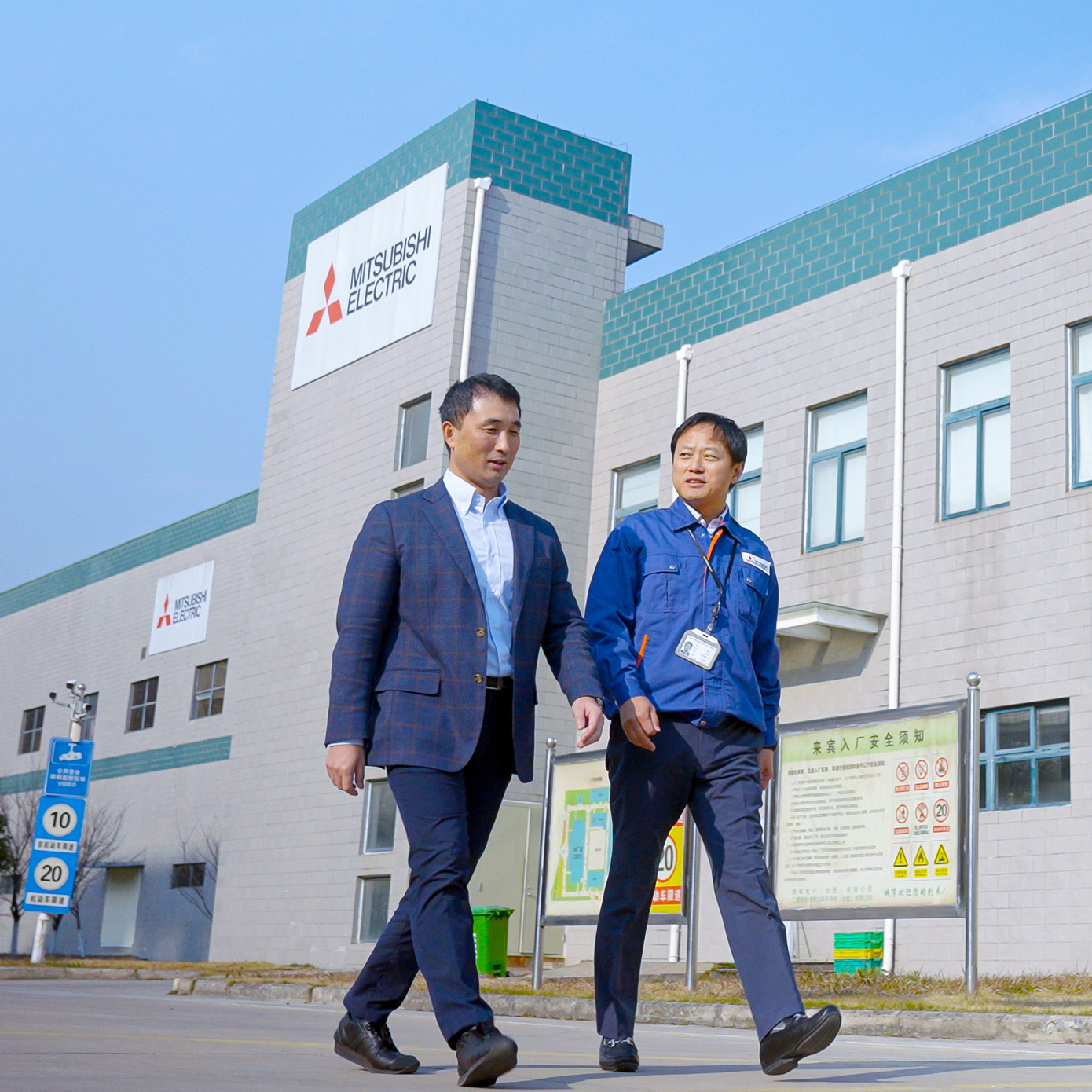Voices
2025.03.05
A system engineer at the Hefei plant in China talks about the appeal and future prospects of power semiconductors.
- #From employees around the world
- #Interview
- #Asia-Oceania
- #China
- #Semiconductors

- Home
- Our Stories
- Article list
- A system engineer at the Hefei plant in China talks about the appeal and future prospects of power semiconductors.
Mitsubishi Electric has many business locations around the world. How do Mitsubishi Electric employees, who play different roles in a wide range of business areas, approach their work every day? In this series of interviews, we take a look at the candid views of employees in different locations.
Shang Ming is currently based in Hefei, China, working on power semiconductors. When he first joined Mitsubishi Electric, he was assigned to the Semiconductor Division and spent 13 years in Japan, mainly in product development. Now back in his home country, he is involved in a wide range of activities, including providing technical support to Chinese customers, promoting new products, conducting market research, and even developing factory systems.
Power semiconductors, one of Mitsubishi Electric's main products, are, as the name suggests, electronic components capable of handling high voltages and large currents, and are characterized by a structure different from that of ordinary semiconductors.
The wafer, the main component of a power semiconductor, usually takes two or three months to produce, and the process is delicate and complex. First, the raw material — low-purity silica — is refined to produce ultra-high-purity silicon ingots. These are then sliced flat and thin, polished on the surface and mirrored on the back to produce wafers suitable for power semiconductors, before moving on to the next stage of the process.
He says that he has an overwhelming feeling of happiness when the market gives recognition to a power semiconductor that has undergone repeated and careful design and through the lengthy production process.

The development of power semiconductors is a business that has a direct impact on society. The world is currently demanding technologies to realize a sustainable society, as represented by the terms "carbon peak" and "carbon neutrality"*. This social context is also driving the rapid growth of power semiconductors.
*China's climate action plans announced by President Xi Jinping at the UN General Assembly (2020).
 Power semiconductors with energy-saving benefits are used in a wide range of applications, including the fields of mobility, consumer electronics and the manufacturing industry.
Power semiconductors with energy-saving benefits are used in a wide range of applications, including the fields of mobility, consumer electronics and the manufacturing industry.
"You can't find what you really need just by sitting behind a desk. I want to see the world with my own eyes and create products that will warm the hearts of people all over the world," Mr. Shang says. His insatiable quest continues.
INTERVIEWEE
System Engineer
Mitsubishi Electric GEM Power Device (Hefei) Company LimitedShang Ming

Joined Mitsubishi Electric Corporation in 2001, and after working in Japan for 13 years, he worked in the power semiconductor business at the Hefei plant in China. Currently, he is working on market research and new product development for power semiconductors.
*The information on this page is current as of December, 2024.
Written by Our Stories Editing Team




